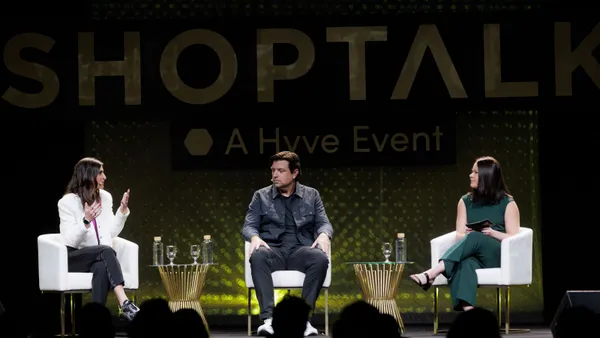Since the start of the new decade, industry experts across sectors (retail & hospitality, manufacturing, healthcare, and beyond) have spent time talking about the future of work. In today’s uncertain climate, that future of work vision may seem like a distant, even unrealistic place. The retail industry is faced with the greatest disruption in recent memory: a global pandemic with massive economic impact. Certain aspects of consumerism as we know it are possibly forever changed.
Conversely, the world of retail is certainly no stranger to change. Retailers are experts in overcoming hurdles while managing to stay relevant and successful.
In light of COVID-19, this is now being tested more than ever. We have seen many retailers across the world take selfless and dramatic steps to prevent the spread of the pandemic by offering different formats and delivery, closing stores, re-fitting for new near-term purpose, reducing hours, all while communicating openly with customers and employees. It has also been heartening to see many retailers maintain exemplary communications, pay, and benefits for their associates despite having to shutter physical locations.
With all of this in mind, I take a critical look at how retail and hospitality look today, how it might look tomorrow, and how leaders can best prepare themselves for business continuity after COVID-19.
Retail and hospitality today
In today’s market, a retailer needs to define its competitive advantage. Discount and e-commerce retailers, like Amazon and Walmart, and high-value superior experience retailers, like Sephora and Lululemon, do just that through various consumer, inventory, and supply-chain management models (e-commerce, delivery options, etc.).
The retailers who have delayed investing in inventory/supply-chain management will find themselves behind others, especially now considering the global pandemic. These retailers are now frantically trying to get a grasp of what they have, where they have it, how to deliver their products, and more.
As well, grocers, pharmacies, DIY, chain-drug stores, farm supply are seeing a boom in business as they were designated an essential service, while other options were not and were forced to shut down.
This may cause a lingering effect on where customers continue to go for goods after the worst of COVID-19 is behind us. In fact, it may change consumers’ behavior permanently.
Harmonized retail models (i.e. omnichannel sales, communications, and showing up for your customer) have now become a more critical function for retailers during this crisis. Many retailers have had to force rushed execution of different consumer options like home delivery, BOPIS/BOPIC, and more. The retailers who had these models implemented ahead of this crisis are ahead of the curve.
Retail and hospitality tomorrow
Consumers are now seeing how important it is to support their local business community. Going forward, consumers may continue to trade locally and support their local food service and restaurant business more.
The trickle-down effect of helping other service-workers locally to support the marketplace, whether lawncare, house cleaning, or painting, has shown how vital it is to support community commerce. More people are appreciating these hard workers and the importance of providing opportunity in exchange for services – and in turn, how employers treat their workers is also now top of mind for many consumers in a new, powerful way.
How we behave as consumers will be impacted forever; hygiene, awareness, consideration, selflessness, empathy, and the importance of staying healthy for yourself and those around you are now critical for all of us.
In the near-term, we will also see e-commerce continue to grow significantly. As it is, e-commerce is already at 12-20% (sector dependent) of total retail revenue – I suspect that we will see this continue to grow, given the change in the retail market, and the temporary closures of most brick-and-mortar locations. We may see a steady-state of online retailers jumping closer to 30% post COVID-19. However, as in-store retail comes back to life, the rate of e-commerce vs. brick-and-mortar will begin to level off.
What comes after tomorrow
On top of dealing with the reactive, current situation of COVID-19, retailers need to be ready for life after this pandemic. There needs to be a sense of optimism that there will be a prosperous, active future for the retail industry.
Many retailers have been pushed into a new “normal.” Whether an urgency to reconcile their slow logistics and inventory systems investments, acceleration of their digital and BOPIS operations, faster shakeout of already failed models, etc., there will be no shortage of change to adapt to when all is said and done. There is no question that the ramifications of this new normal will persist and re-shape retail going forward.
It’s critical that retailers begin to develop a plan for when workers can get back to work in full operation mode, and to communicate this planning to all associates. It should be focused on mission critical projects. Business leaders will need to re-evaluate processes and their supporting systems for scalability. Operations will need to continue complying with the lingering requirements when headcounts are reduced, while it begins to ramp up the business operations as stores re-open. Distribution centers and warehouses will be recovering from overload and burnout as they recover from the excessive demand during the pandemic. Lastly, HR will be left with a talent gap that will eventually need to be filled – how this is communicated will need to be handled with sensitivity.
When retailers find the calm after the COVID-19 storm, they should consider implementing a harmonized HCM approach and an effective Human Capital Management (HCM) software (if they haven’t already) to help manage the impending talent gap. Similarly to those retailers who already had effective harmonized retail models implemented (like e-commerce, BOPIS, and a customer experience implemented across channels), the businesses who already have an effective HCM software to help manage, pay, keep track of, and take care of their people, were likely better equipped to manage the crisis. Every experience is a learning experience – so once retailers bounce back, they should investigate these effective products to help streamline and care for their people.
As well, workers will be seeking an extra level of care after the undeniable trauma of this pandemic. HCM software like Dayforce can help business leaders more effectively and efficiently take care of and manage their people. For example, Dayforce just recently released Employee Safety Monitoring to help employers monitor their associates during this crisis, and COVID-19 Learning Portal to help employers/workers stay up to date with COVID-19-related resources. And – innovations like Dayforce Wallet – which allow workers to access their earned wages on-demand and store them in a digital wallet – will help workers feel secure, cared about, and financially sound.
Learn more about how Ceridian is supporting its customers and beyond during the COVID-19 crisis in our COVID-19 Central.










